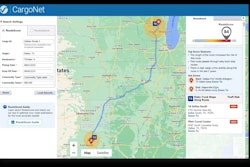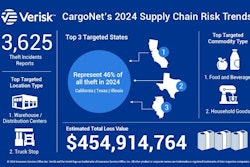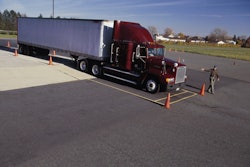In an industry with tight profit margins and fluctuating fuel prices, cost control is essential for staying resilient in the face of economic challenges.
Most fleets that have endured recent challenges have likely come to understand the critical distinction between generic banking relationships and partnerships with industry-specific lenders who truly grasp the complexities of the transportation sector, said Dale Delmege, vice president of western region transportation at Commercial Credit Group.
Increasingly, fleets need to strengthen their ties with lenders capable of offering custom solutions for the hurdles faced by trucking companies, Delmege added.
“Cash flow has risen to the top of management priorities, where a combination of accounts receivable financing, debt refinancing and tightening controls on operations will be necessary to be stable,” Delmege said.
As fuel prices play a large role, Delmege pointed out that fleets will need to make sure they are positioned to handle fluctuations in fuel costs in a timeline aligned with debt schedules.
For owner-operators in the industry, Ken Judd, CEO, Transportation Factoring, at eCapital, said it’s essential to know your cost to operate based on your fixed and variable expenses.
“If you have debt, you will need to create a plan for cash flow, billing and collections,” Judd said. “This usually means finding a freight factoring company to reduce your incoming accounts receivable wait from around 37 days to same day or next day. This keeps your daily operations moving and allows you to pay bills on time. It can also allow you to sock away funds for emergencies and breakdowns.”
It's also critical to look at your highest costs, Judd added, which are likely to be insurance, fuel and equipment, and wherein would have room to reduce costs.
The Trump administration’s plans to impose tariffs poses another challenge. Alberto Del Pilar, managing director of ButcherJoseph & Co., said to consider risk management tools such as hedging against currency fluctuations, essentially locking in a specific exchange rate for future transactions to minimize impacts of market volatility.
“Figure out ways to diversify revenue streams away from areas of the market that might be exposed to tariffs,” Del Pilar added.
Facing possible headwinds

Find out what 2025 looks like for the trucking industry
Join us for this webinar Join us on February 13, 2025, at 2 p.m. Eastern, as two leading trucking economic experts discuss all the trucking industry influences in play (micro, macro and political), and give an outlook of what is likely in store in the quarters ahead in 2025. This webinar is brought to you by Valvoline.
Looking ahead, Judd said key challenges include fluctuating freight demand, regulatory changes, availability of vehicle parts, high interest rates, driver shortages, the rise in sustainability costs and cyber threats.
Delmege also cautioned managing equipment acquisition costs in a market that will see fluctuations in pricing, especially on the used market side.
The 2027 low-NOx rule may present challenges in both availability and price of pre-27 power units, he said. “Fleets may want to move up their decisions on near-term equipment procurement while there remains optionality. With some stabilization, it will also be a time to consider restructuring of debt to better control their debt obligations and consciously manage their equity positions.”
It’s worth investing in technology that brings operational efficiencies, Judd said.
“Specifically, consider leveraging AI automation where relevant and investing in cybersecurity measures. Creating comprehensive training programs can also help combat labor shortages.”
[Related: Small fleets could be at higher risk of cyber threats]
Del Pilar agreed on utilizing technology to gain an upper hand, including using software to gain insights into customer’s needs and preferences, to reduce damage claims and improve on-site performance.
“Folks are really leaning into technology to address both labor and fuel management,” Del Pilar said.
Regardless of a freight recession, mergers and acquisitions in the industry have continued to hold steady since 2023, Judd noted.
“I believe we will continue to see sporadic M&A in the industry as buyers will continue to look out for well-run operations that bring value for them and their customers,” Judd said.
The rebalancing of capacity and demand should equate to more predictable cash flow and a catalyst for more M&A deals, Delemege pointed out.
“Companies with access to growth capital will certainly be looking for opportunities to increase their lanes and geographic footprint, especially in an environment where there is a combination of wounded financials and fatigue in managing the challenges of the trucking industry," he said. “Sellers will listen to exit strategies that secure something positive when they have experienced such negativity over the last couple of years."














